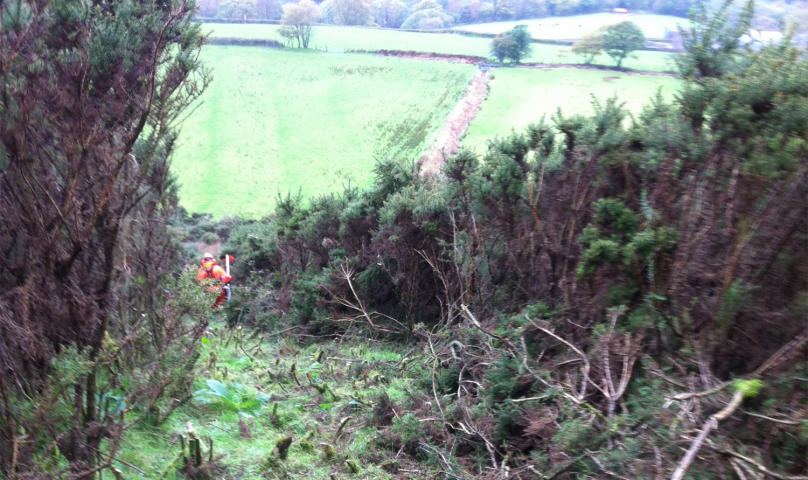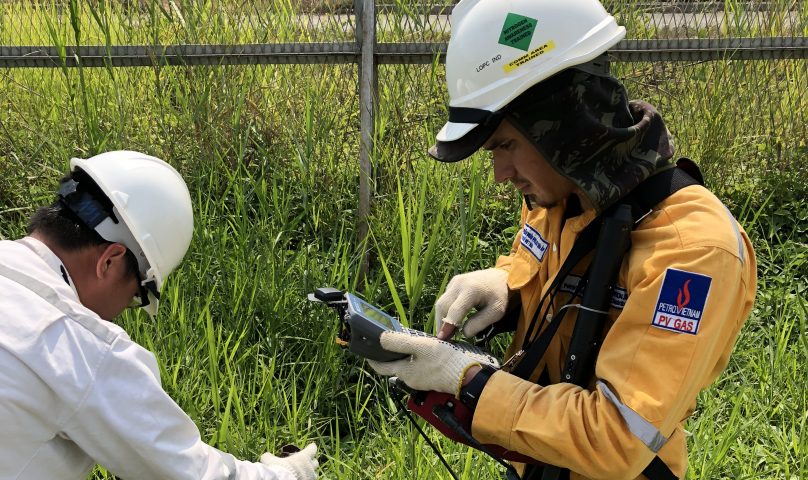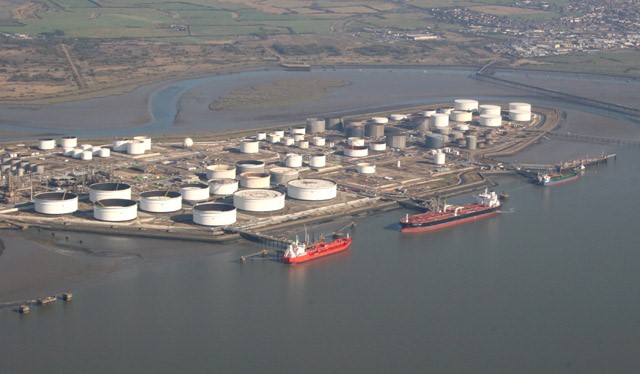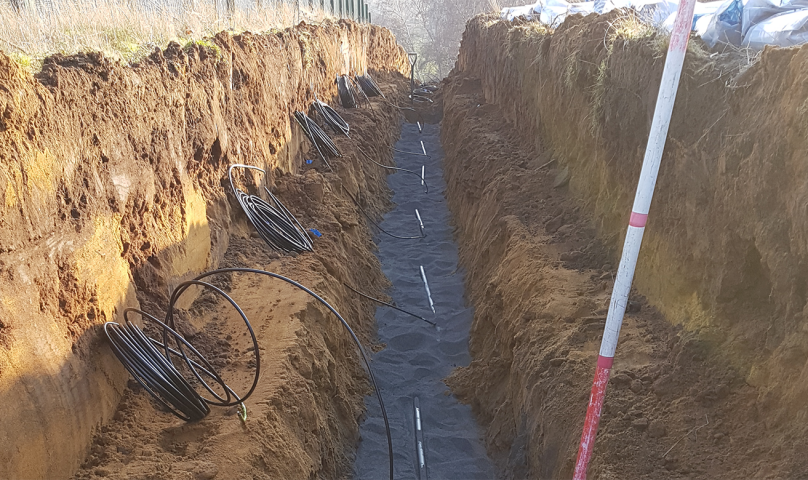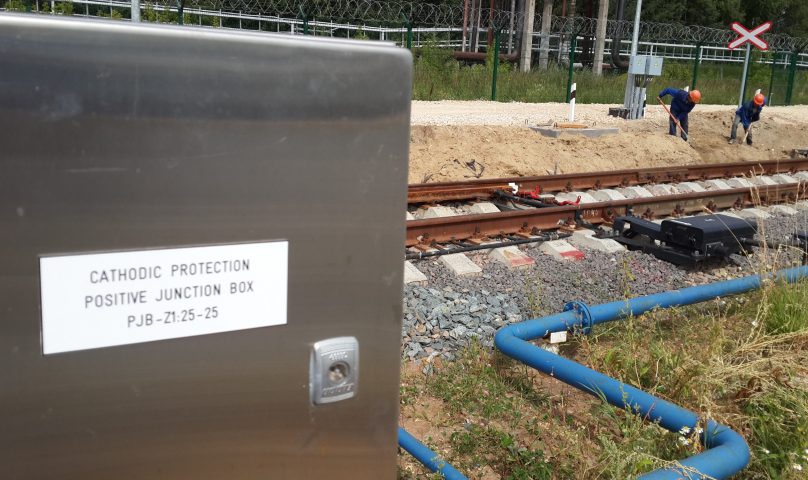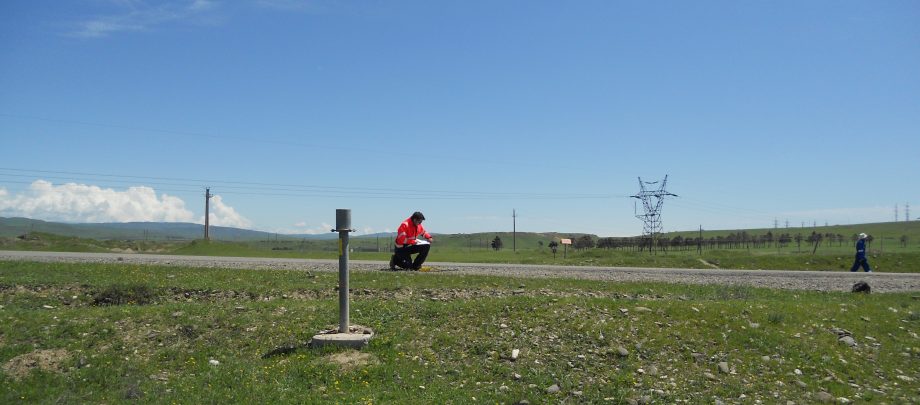
If you have requirements for routine CP monitoring of existing structures such as a pipeline, jetty or tank farms.
If you have a new build pipeline and require a feasibility study for cathodic protection, or specific requirements such as interference (AC/DC), coating inspections, soil resistivity and current drain testing we can offer a service to support your requirements.
Inspection Services
CPCL conduct routine monitoring inspections on various structures such as pipelines, chemical plants, jetties, refineries and power stations.
These inspections ensure compliance with applicable criteria to the structure and factors in both existing and historical information. The primary aim is to ensure that your CP system runs at an optimum level and structures are not subjected to degradation and corrosion as far as practicable.
A current drain test estimates the current required to protect structure effectively. This data assists in calculating current density and along with other key information such as soil resistivity and surface area measurements will help ascertain the best design methods to protect the structure from corrosion.
A current drain test in most circumstances is done by impressing a direct current to the pipeline and measuring the results.
Soil resistivity measurements are normally utilised for two specific purposes:
- To indicate the general corrosivity of the soils in the proximity of the structure
- For CP design purposes, such as anode groundbed, earthing and attenuation calculations
The typical unit of measurement is the ohm metre (ohm.m). The Barnes Layer procedure estimates effective resistivity of layers of soil using results obtained by either of the above methods.
The Wenner 4-pin method requires four metal electrodes to be placed in equal separation in a straight line in the soil to a depth not exceeding 5% of the separation distance. A voltage is impressed between the outer electrodes causing current to flow and the voltage drop between the inner electrodes is measured using a sensitive voltmeter.
Significant AC potentials can be encountered on structures. These AC potentials can occur on a structure as a result of induction, ground return currents, or faulted power circuits. Typically, in areas where a structure runs in parallel to high voltage AC (HVAC) power systems.
CPCL can assist in identifying locations at risk and provided mitigation methods to reduce the hazard and risk on both new and existing structures.
DC interference can cause corrosion issues and can originate from various sources, common issues include DC traction systems, adjacent CP Systems and solar farms.
Interference can cause damage to buried structures, CPCL can assist in identifying at risk locations and provided mitigation methods to reduce the hazard/risk on both new and existing structures.
Coating inspections are responsible for performing and documenting tests on a variety of coatings so that the client can be informed on the condition of their asset and provide some assurances and recommendations if applicable (Such as follow up repair work). Inspections and tests are inline with recommended practice and international standards.
Cathodic Protection feasibility studies involve carrying out a detailed study of the structure and surrounding areas to ensure that a CP system can be upgraded or installed. A feasibility study will include soil resistivity readings, current drain tests, carry out checks on any existing systems (if applicable) and to check locations for areas where items can be installed.
With this information, it will be possible to calculate the size and type of system that is required in order to protect the structure. This will be presented to the client in the form of a design document and bill of materials.
River surveys are carried out on sections where the pipeline route crosses a waterway, these are sections that cannot be completed during a typical Close Interval Potential Survey (CIPS) due to safety and accessibility issues. The methodology for assessing the levels of cathodic protection on a waterway crossing is similar to other techniques
Partnering with contractors with the appropriate skills and expertise, CPCL can provide a solution to inspect pipelines where they cross rivers and estuaries to provide the following detail:
- The depth and profile of the pipeline within the limits of the crossing.
- The profile of the bed and banks.
- The condition of the pipelines, where exposed, within the crossings.
- The construction and conditions of the bed and banks.
- That the pipeline has adequate cathodic protection.
CPCL conduct routine monitoring inspections on various structures such as pipelines, chemical plants, jetties, refineries and power stations.
These inspections ensure compliance with applicable criteria to the structure and factors in both existing and historical information. The primary aim is to ensure that your CP system runs at an optimum level and structures are not subjected to degradation and corrosion as far as practicable.
A current drain test estimates the current required to protect structure effectively. This data assists in calculating current density and along with other key information such as soil resistivity and surface area measurements will help ascertain the best design methods to protect the structure from corrosion.
A current drain test in most circumstances is done by impressing a direct current to the pipeline and measuring the results.
Soil resistivity measurements are normally utilised for two specific purposes:
- To indicate the general corrosivity of the soils in the proximity of the structure
- For CP design purposes, such as anode groundbed, earthing and attenuation calculations
The typical unit of measurement is the ohm metre (ohm.m). The Barnes Layer procedure estimates effective resistivity of layers of soil using results obtained by either of the above methods.
The Wenner 4-pin method requires four metal electrodes to be placed in equal separation in a straight line in the soil to a depth not exceeding 5% of the separation distance. A voltage is impressed between the outer electrodes causing current to flow and the voltage drop between the inner electrodes is measured using a sensitive voltmeter.
Significant AC potentials can be encountered on structures. These AC potentials can occur on a structure as a result of induction, ground return currents, or faulted power circuits. Typically, in areas where a structure runs in parallel to high voltage AC (HVAC) power systems.
CPCL can assist in identifying locations at risk and provided mitigation methods to reduce the hazard and risk on both new and existing structures.
DC interference can cause corrosion issues and can originate from various sources, common issues include DC traction systems, adjacent CP Systems and solar farms.
Interference can cause damage to buried structures, CPCL can assist in identifying at risk locations and provided mitigation methods to reduce the hazard/risk on both new and existing structures.
Coating inspections are responsible for performing and documenting tests on a variety of coatings so that the client can be informed on the condition of their asset and provide some assurances and recommendations if applicable (Such as follow up repair work). Inspections and tests are inline with recommended practice and international standards.
Cathodic Protection feasibility studies involve carrying out a detailed study of the structure and surrounding areas to ensure that a CP system can be upgraded or installed. A feasibility study will include soil resistivity readings, current drain tests, carry out checks on any existing systems (if applicable) and to check locations for areas where items can be installed.
With this information, it will be possible to calculate the size and type of system that is required in order to protect the structure. This will be presented to the client in the form of a design document and bill of materials.
River surveys are carried out on sections where the pipeline route crosses a waterway, these are sections that cannot be completed during a typical Close Interval Potential Survey (CIPS) due to safety and accessibility issues. The methodology for assessing the levels of cathodic protection on a waterway crossing is similar to other techniques
Partnering with contractors with the appropriate skills and expertise, CPCL can provide a solution to inspect pipelines where they cross rivers and estuaries to provide the following detail:
- The depth and profile of the pipeline within the limits of the crossing.
- The profile of the bed and banks.
- The condition of the pipelines, where exposed, within the crossings.
- The construction and conditions of the bed and banks.
- That the pipeline has adequate cathodic protection.
Ready to get started?
get in touchProjects
Meet the team
Angie has a BSc in Metallurgical Engineering from Universidad Industrial de Santander; she also has a NACE CP1: Cathodic Protection Tester qualification. Angie has been a valued CPCL team member since 2022, as a CP Engineer, she excels not only in global CIPS and DCVG projects but also in managing survey data and creating reports for clients. Angie’s latest accomplishment at CPCL is achieving her Level 3 Cathodic Protection certification from ICORR. With 4+ years in field-based cathodic protection, she's conducted inspections worldwide, including Akrotiri, Cyprus. Angie has attended conferences like AI World in Texas and Smart Grid Days, Italy.
Jonathan is certified ICorr CP Level 3, he also has a BTEC Level 3 Diploma in Electrical & Electronic Engineering. Jonathan has been with CPCL for over 15 years and has had a wide range of experience, working on some of CPCL’s biggest contracts. These include the Thames Barrier, Immingham Oil Terminal and for Interserve Defence in the Falkland Islands.
Chris Pimm has over 15 years experience in the cathodic protection industry and is a qualified Senior CP Technician. Chris has extensive experience working on projects overseas, in countries including Madagascar, Falkland Island, Kazakhstan, Ireland and Turkey. Chris' experiences now assists our Field Engineering department, through the management of our field engineers and taking on the responsibility for all commercial and technical aspects of the department
CP Engineering Services
CP Installations
Cathodic protection equipment installation on sites and structures of a simple or complex nature throughout the world.Pipeline Surveys
Utilise cutting edge equipment and technology to provide state of the art surveys to provide comprehensive reports.Bespoke Services
Additional and bespoke cathodic protection field engineering services including training and equipment hire.



